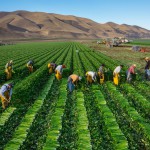‘Big Food’ dominates school food conference
The food industry’s influence over the School Nutrition Association’s conference sessions was alarming.
If there’s still any doubt about where the School Nutrition Association’s (SNA) allegiances lie, their recent School Nutrition Industry Conference (SNIC) leaves no uncertainty.

The annual conference, which this year ran from January 11- 13, is “where school nutrition directors and industry representatives [came] together to build successful partnerships to better serve the nation’s children,” according to the SNA’s website. But a review of the conference agenda, speakers, educational sessions and sponsors paint a far different picture – one of an overwhelmingly industry-driven event heavy on the promotion of food and beverage offerings from major processed food corporations.
That’s bound to happen when the SNA taps the food and beverage industry to financially sponsor a conference. Food behemoths Domino’s Pizza and Jennie-O Turkey Store were listed as $5000+ sponsors of SNIC. Other Big Food corporations donating between $500 and $4,999 included ConAgra, Five Star, General Mills, Kellogg’s, Sara Lee, Barilla, Kikkoman, Land O’Lakes, PepsiCo, Rich Products and Schwan’s.
Politico’s Morning Ag described the conference as “an event to build partnerships and talk about how the Healthy Hunger-Free Act regulations are affecting ‘the business of school nutrition.’ Industry was also tapped to finance and bestow awards on SNA members for achievement in foodservice:
As the conference kicked off on Sunday, Basic American Foods, Schwan’s Food Service Inc. and Tyson Foods Inc. held a dinner reception at the swanky Omni Resort & Spa at Montelucia, in nearby Scottsdale, to honor their Foodservice Achievement Management Excellence (FAME) Award winners.
But even beyond giving out awards to SNA members, the food industry’s influence over conference sessions was alarming. While the SNA maintains on its website that it is “the national organization of school nutrition professionals committed to advancing the quality of school meal programs through education and advocacy,” the SNIC program was ridiculously top heavy with Big Food speakers and exhibits. In fact, two of the four keynote speakers were from major food corporations (the president of Cinnabon and former president of Coca-Cola, North America Foodservice); three of the nine education sessions featured speakers from large food corporations (Cinnabon, Rich Products and Coca-Cola). Exactly what these Big Food speakers (who represent companies producing highly-processed treats, sweets and other low-nutrition items) could impart to advance the quality of school meals is a mystery.








